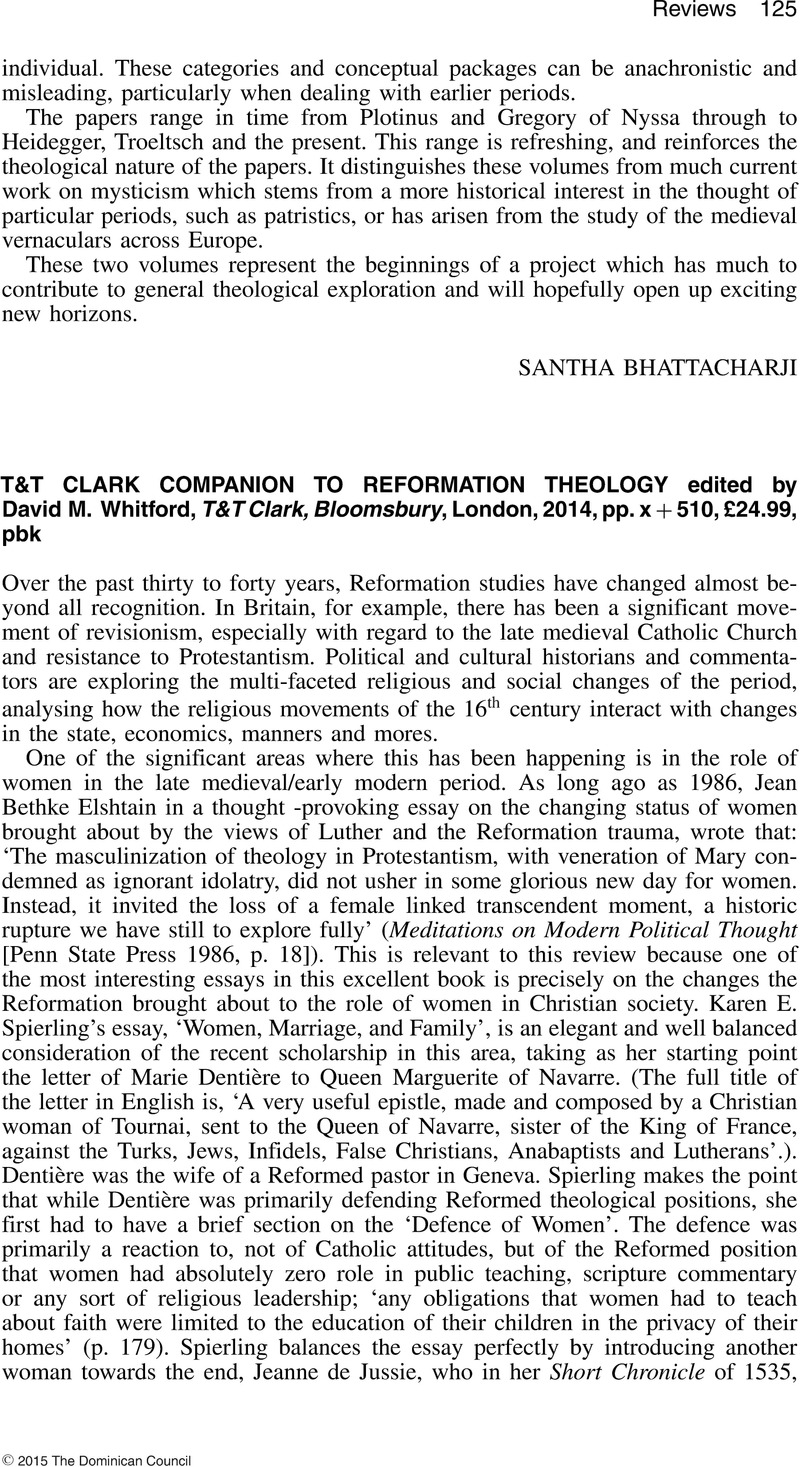No CrossRef data available.
Article contents
T&T Clark Companion to Reformation Theology edited by David M. Whitford, T&T Clark, Bloomsbury, London, 2014, pp. x + 510, £24.99, pbk
Review products
T&T Clark Companion to Reformation Theology edited by David M. Whitford, T&T Clark, Bloomsbury, London, 2014, pp. x + 510, £24.99, pbk
Published online by Cambridge University Press: 01 January 2024
Abstract
An abstract is not available for this content so a preview has been provided. Please use the Get access link above for information on how to access this content.

Information
- Type
- Reviews
- Information
- Copyright
- Copyright © 2015 The Dominican Council. Published by John Wiley & Sons Ltd

